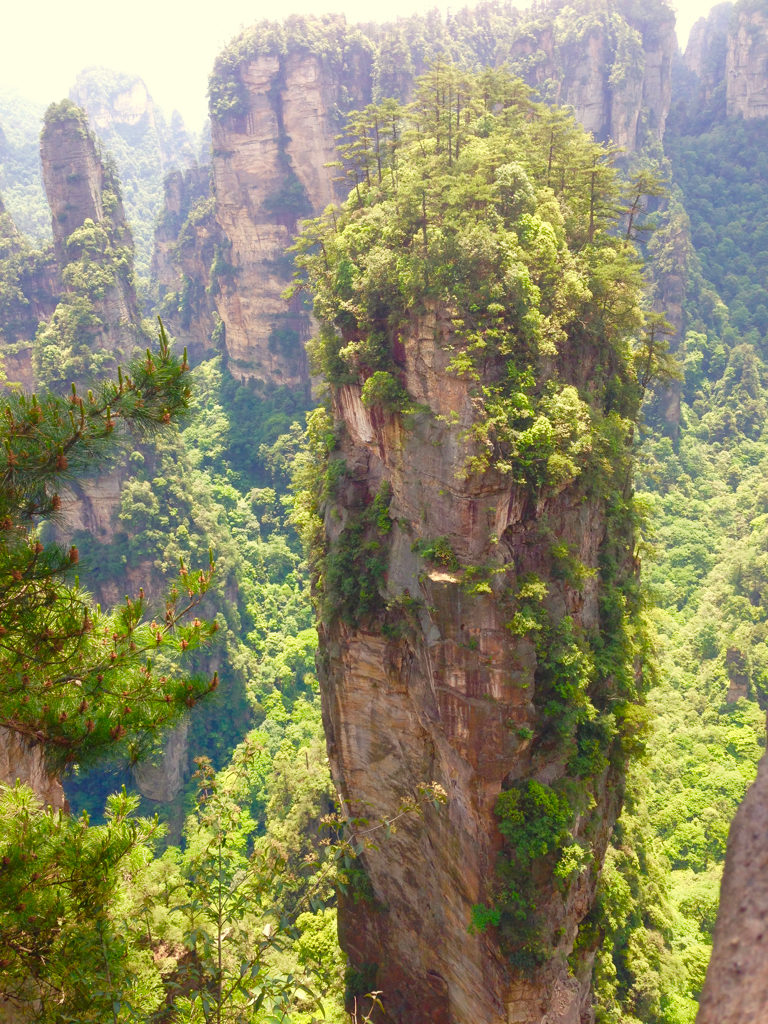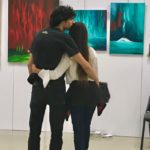Artist Residency Program and Exhibition, China
This year, I had the incredible opportunity to join a one-month artist residency in China, organized by the Chinese Ministry of Culture and the China Arts and Entertainment Group (CAEG). The program brought together artists from around the world to experience China’s artistic legacy, history, and diverse landscapes. Our journey was especially focused on Hunan Province, a region rich in natural beauty, revolutionary history, and deep cultural roots. The final group exhibition was titled “The Chinese Civilization: Hunan Impression,” reflecting the emotional and visual impressions each of us took from the places we visited.
One of the most unforgettable stops was the Zhangjiajie mountain range, famously known as the inspiration for the floating peaks in Avatar. These towering stone spires rising from the mist didn’t feel real—they felt like something from a dream. I’ve seen many landscapes before, but standing in Zhangjiajie was the first time I felt completely swallowed by nature’s scale. The vastness, the silence, and the light filtering through the cliffs—it was like the earth was painting its own masterpiece. That moment shifted something in me.
We began in Beijing, exploring iconic landmarks like the Forbidden City, where centuries of imperial history echo through painted eaves and vast courtyards. From there, we traveled across five provinces, including Mao Zedong’s hometown, and visited sacred mountains and temples that reflected China’s deeply layered cultural roots.
At the end of this journey—after absorbing history, tradition, and natural wonder—I arrived at Songzhuang Artist Village on the outskirts of Beijing. This is where I finally paused, stayed still, and created five new paintings for our residency exhibition. My studio was modest, but the energy around me was electric. For a week, I worked from morning until night, pouring everything I had seen and felt onto canvas. These works were later featured in a group show titled “The Chinese Civilization: Hunan Impression,” held at The Capital Library of Beijing. It was a proud moment—not just for the paintings, but for the journey behind them.
What Makes Songzhuang Special
Songzhuang isn’t polished or touristy. It’s not like the commercial galleries in Shanghai or the curated museum halls of Beijing. This is a living, breathing artist village—where artists live side by side, often hanging out together, sharing ideas, and supporting one another. When they see a foreigner, they come and talk to you warmheartedly, curious and open, making you feel instantly welcome. There’s something raw, honest, and deeply human about it.
The village began in the 1990s, when artists like Fang Lijun left Beijing’s Yuanmingyuan artist colony seeking more freedom and affordable space. Since then, Songzhuang has grown into the largest artist community in China, with over 5,000 working artists, including painters, sculptors, filmmakers, and installation artists. It’s a place of constant experimentation, where creativity unfolds without the need for permission or perfection.
How It Changed Me as an Artist
Walking through Songzhuang, I passed quiet alleyways where massive canvases leaned against brick walls, half-finished sculptures rested in courtyards, and you could tell just by looking—these people were artists. Instead of traffic, the air was filled with the sound of conversation, paintbrushes, and stillness. Artists sat outside drinking tea, inviting conversations with strangers. There was a sense of openness and mutual respect, where everyone was allowed to just be—no posturing, no pretension.
As an artist, my focus has always been on inspiration, movement, emotion, and color. But Songzhuang reminded me that art lives beyond the studio walls. It’s in the way people greet the day, the way light falls on a dusty window, and the way stories are shared in silence. There was no pressure to “brand” or be “commercial”—just a deep freedom to create honestly. That kind of atmosphere changed me. I left Songzhuang with new paintings—but more importantly, with a renewed sense of why I paint at all.


